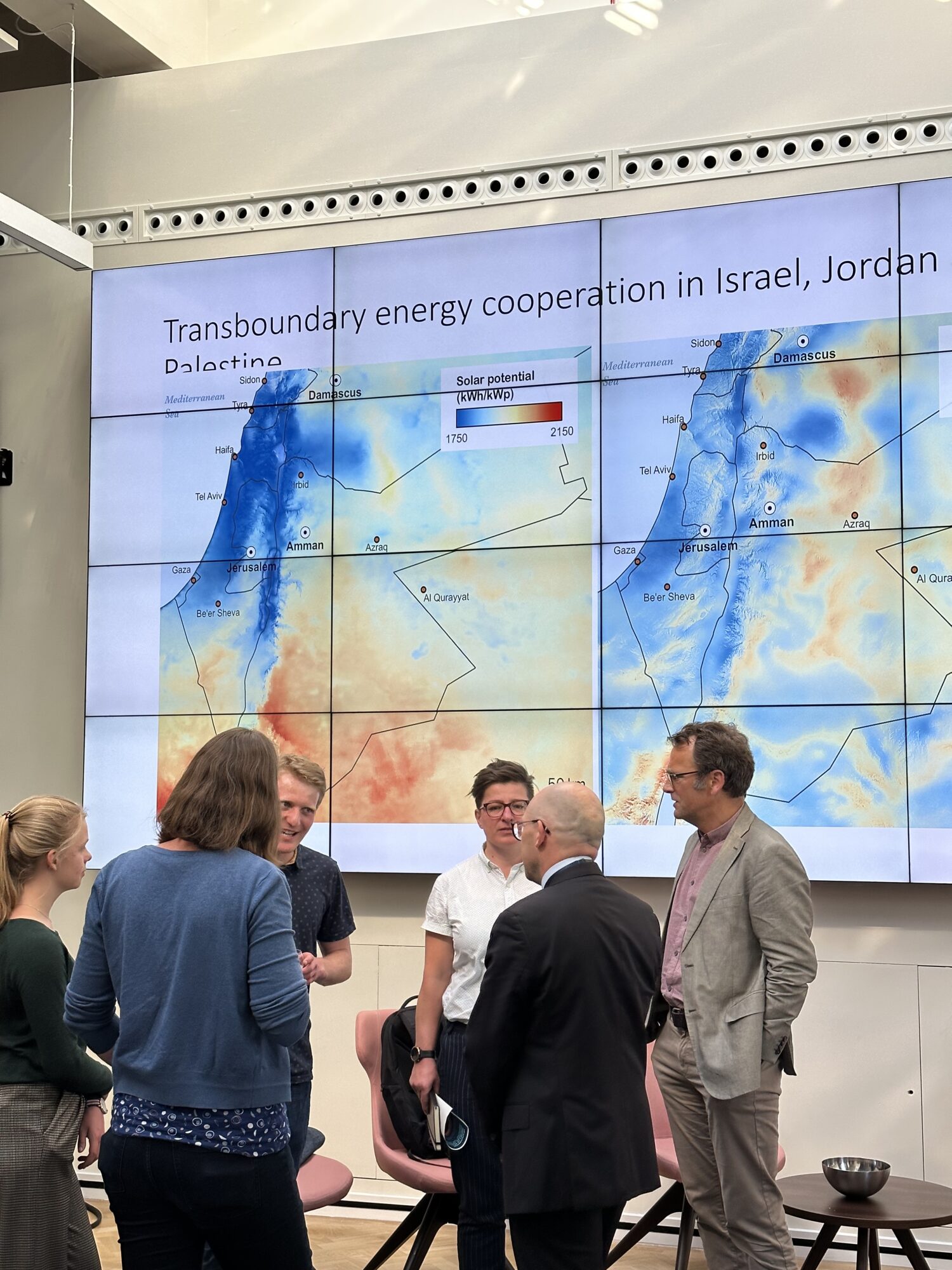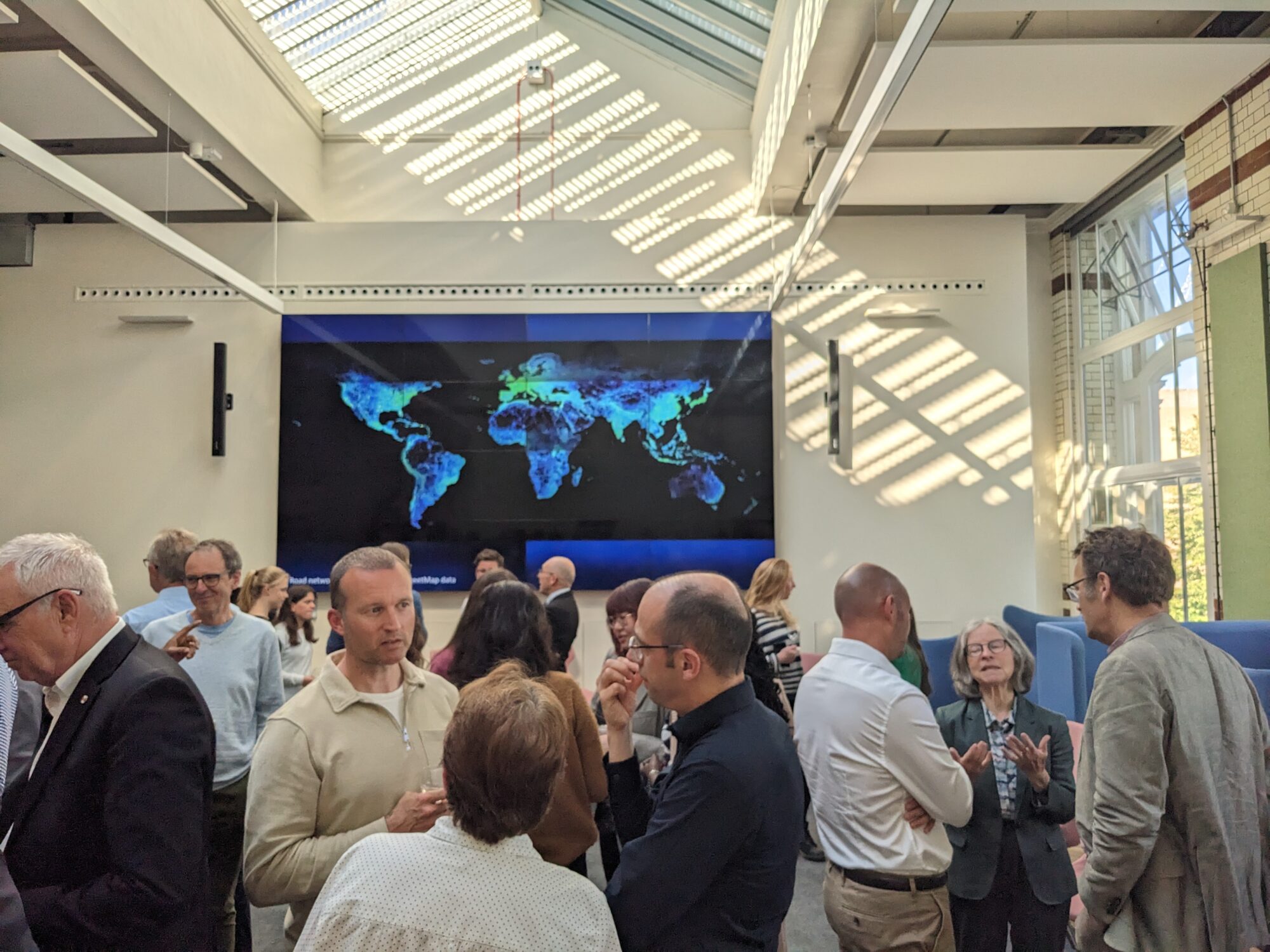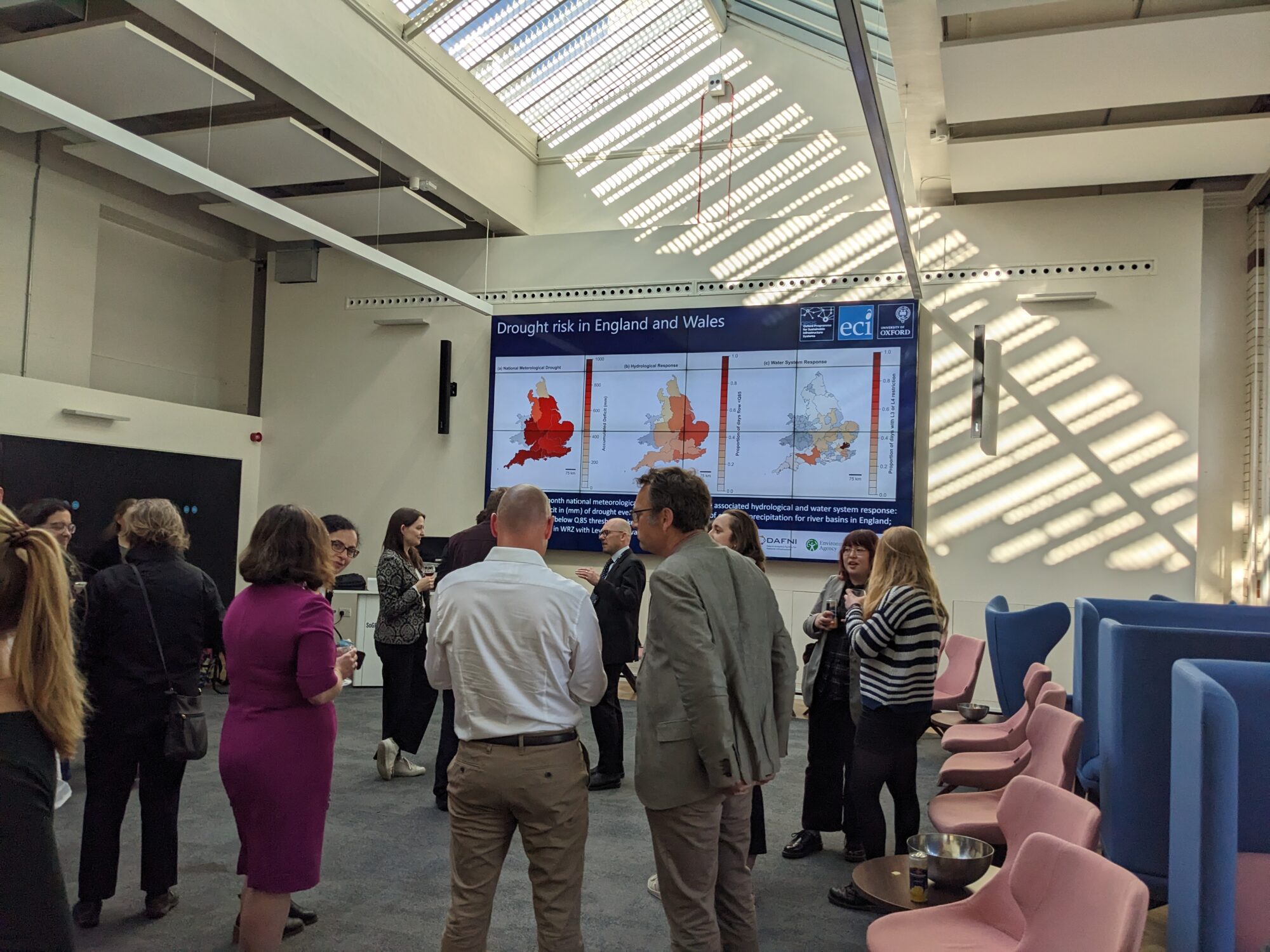DAFNI Hardware at Oxford University

National water modelling propelled by DAFNI hardware infusion
By Anna Murgatroyd, research associate, OPSIS
The purchase of DAFNI-funded hardware is enabling the Oxford Programme for Sustainable Infrastructure Systems (OPSIS) at University of Oxford to visualise modelling results, including satellite imagery and future scenarios, at very high resolution. The Water Resource Model of England and Wales (WREW) is one of the projects using the DAFNI platform and DAFNI hardware to model water infrastructure and water policies at country level for the first time.
The use case
OPSIS purchased a set of interactive large screens for its new visualisation suite with investment from the Data & Analytics Facility for National Infrastructure (DAFNI) hardware fund.
OPSIS is part of the Environmental Change Institute at the University of Oxford and provides research and education to enable sustainable and resilient infrastructure. The group is at the forefront of methodologies for analysing infrastructure systems (energy, transport, water and telecommunications) and their interactions with the natural environment, people and the economy.
What does the DAFNI equipment allow you to do?
We use the DAFNI hardware for visualising and communicating the results from our infrastructure systems analysis. Having recently moved to a new office space, OPSIS now have a room dedicated to our visualisation tools and we can use the equipment when we invite research partners to visualise the outputs.
Using a series of interactive screens, we can visualise and demonstrate different tools and software, together with big data sets, on the screens. This is a considerable improvement from our previous one small smart screen, which prevented us from visualising results at large scales and high resolution.
Professor Jim Hall leads OPSIS, and explains, “At OPSIS we aim to improve decision-making by providing evidence and tools to analyse infrastructure systems’ resilience, explore possible futures and plot out pathways to sustainability. The new visualisation equipment funded by DAFNI helps us to scrutinise the results and communicate them to our research partners and within the group.”
In addition to use by OPSIS, the room will also be made available for use by other research groups in the Environmental Change Institute at University of Oxford, for interactive decision-making sessions.

Water modelling: the WATHNET/WREW models
One of the projects we’re working on at OPSIS where the new hardware is invaluable is the National System Simulation Modelling project, for which we have developed the Water Resource Model of England and Wales (WREW). This model builds on past research by the MaRIUS project (Managing the Risks, Impacts and Uncertainties of drought and water scarcity), and has been used in the 2016 study by Water UK and in the 2020 National Framework.
We identified that there was a significant knowledge gap in understanding how droughts would impact the water supply of England and Wales, and in examining how water supply policies could help mitigate or overcome water shortages. Consequently, we partnered with the Environment Agency and Ofwat in the project along with the University of Bristol to build a national water supply system model for all of England and Wales.
The WREW model covers all water supply infrastructure, such as reservoirs, boreholes, and desalination plants, which we link to water demand centres – such as households, industry, agriculture, and the environment. The modelling covers time scenarios from now until well into the future, allowing us to model drought risks until the end of 2099.
WREW is built in the water planning software Wathnet, and is hosted on the DAFNI platform. Over the last few years, we have built the model collaboratively with our partners, with workflows, compute power and data systems for our simulation modelling on the DAFNI platform. We can use the platform to calibrate and validate WREW, and run various analyses in line with objectives from Ofwat and the EA to understand drought risks now and into the future.
Tom Russell is a Senior Research Software Engineer and the OPSIS technical lead on the DAFNI platform. He has been using DAFNI for a number of years to run the NISMOD (National Infrastructure Systems-of-Systems Model) to map infrastructure networks in a multi-level risk model and to examine cascading climate risks at various scales to enable sustainable long-term planning. Tom helped train the OPSIS and EA team in use of the DAFNI platform and WREW, and to highlight how it could help propel our research.
This is the first time such modelling has been carried out on a country-level scale for England and Wales, typically it’s been done at water company or catchment scale.
As Dr Jonny Wilson, Water Resources Modelling Lead at the Environment Agency, noted, “DAFNI provides a virtual workspace for collaboration – otherwise each organisation would have to set up its own modelling and computational systems.”
Bodies including the EA and Ofwat recognise that it’s no longer enough for water companies to operate independently; water may need to be shared across water company boundaries in the future, to mitigate against periods where one part of a country could run out of water whilst another enjoys a surplus.
The Environment Agency is now using the WREW tool on the DAFNI platform to run their own analysis, something it would be unable to do locally due to the considerable power required.
As and when new information becomes available, such as legislative updates or new infrastructure, it’s added into the model – this needs to be done periodically as reservoir operating rules, environmental abstraction licences, and so on are updated. The University of Bristol hydrology team regularly supplies updated information from the river flow data that they generate, and we then feed that into the model.
The EA and OPSIS work together to re-test the model, and check that the behaviours still work well.
The visualisation suite equipped with the new hardware is an essential resource and will really bring our meetings with the likes of the Environment Agency, Ofwat, and Bristol University to a new level. We’ll be able to visualise and discuss the outputs we model on the DAFNI platform in much more detail and to progress faster.
Find out more about WREW (Water resources model for England and Wales) and how it’s being used to examine the potential of new water supply infrastructure to build resilience to future droughts: https://royalsocietypublishing.org/doi/full/10.1098/rsta.2021.0292#d1e2344
Read more about how the DAFNI platform supports water modelling in the UK in our blog from Dr Jonny Wilson, Water Resources Modelling Lead at the Environment Agency: https://www.dafni.ac.uk/insights/how-the-dafni-platform-supports-water-modelling-in-the-uk/

